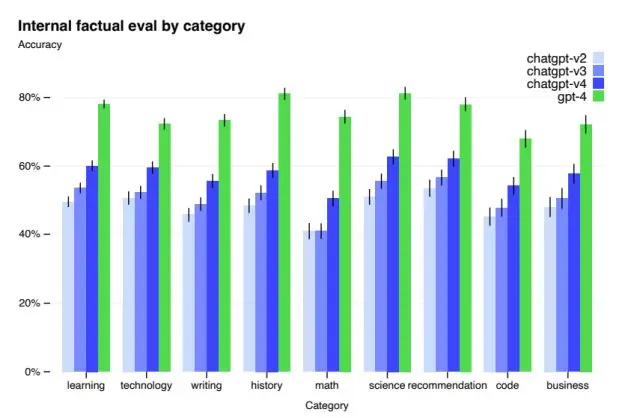GPT-5: Artificial Intelligence of the Future
GPT-5: Artificial Intelligence of the Future
It’s been just over two months since the release of GPT-4, and users are already anticipating the arrival of GPT-5. We’ve seen how powerful and efficient GPT-4 is in various tests and quality assessments. With the introduction of new features such as ChatGPT plugins and web browsing capabilities, it has become even better. Now users are eagerly awaiting more details about OpenAI’s future model, GPT-5, its potential for AGI, and more.
When GPT-4 was released in March 2023, it was expected that OpenAI would unveil its next-generation model by December 2023. However, during a presentation at MIT in April, OpenAI’s CEO, Sam Altman, stated, “We are not doing this, and we won’t be doing it for quite some time,” when asked about training GPT-5. Thus, rumors of GPT-5 being released by the end of 2023 have already been debunked.

Nevertheless, experts believe that OpenAI might release an intermediate version between GPT-4 and GPT-5, called GPT-4.5, around October 2023, similar to how GPT-3.5 was introduced. It is said that GPT-4.5 will finally have the capability of multimodal analysis, meaning the ability to analyze both images and text. OpenAI has already announced and demonstrated the multimodal capabilities of GPT-4 during a live developer broadcast in March 2023.
In addition, OpenAI currently faces several challenges in improving the GPT-4 model before they embark on developing GPT-5. Currently, GPT-4’s inference costs a significant amount of time and money. Access to the GPT-4 API is still relatively limited. Furthermore, OpenAI has recently opened access to ChatGPT plugins and web browsing capabilities, but these are still in beta testing. Providing access to the Code Interpreter for all paid users is also in the alpha testing phase.
While GPT-4 is already quite powerful, OpenAI understands that computational efficiency is a key factor in the model’s stable operation. Adding new features and capabilities creates a more extensive infrastructure, requiring reliable performance across all checkpoints. Therefore, it can be assumed that GPT-5, like Google’s Gemini, will likely be introduced in 2024 unless regulatory hurdles are created by government authorities.
Expected Features and Capabilities of GPT-5:
- Reduction of Hallucinations: The field actively discusses whether GPT-5 will achieve Artificial General Intelligence (AGI), but we will delve into that later. Additionally, it is expected that GPT-5 will reduce instances of hallucinations, improve efficiency, and enhance response times. Hallucinations are one of the key reasons why many users are skeptical of AI models.
- Improved Hallucination Reduction Capabilities: According to OpenAI, GPT-4 showed a 40% improvement over GPT-3.5 in factuality assessment across all nine categories during internal evaluations. Now, GPT-4 has almost an 82% lower probability of generating unreliable or prohibited content. It’s approaching an 80% accuracy mark in accuracy tests across all categories. This marks significant progress in combating hallucinations.
- It is expected that GPT-5 will further reduce instances of hallucinations even more than GPT-4 and provide only factual responses. I have been using the GPT-4 model for various tasks recently, and it has consistently provided objective responses. Therefore, it’s likely that GPT-5 will have even fewer hallucinations than GPT-4.
- Model with Efficient Computational Resource Utilization: GPT-4 is known to be expensive ($0.03 per 1000 tokens) and has a high inference time. In comparison, the older GPT-3.5-turbo model is 15 times cheaper ($0.002 per 1000 tokens) than GPT-4. This is due to GPT-4 being trained on a massive 1 trillion parameters, requiring substantial computational resources. In our recent explanation of Google’s PaLM 2 model, we found that PaLM 2 has significantly smaller dimensions, allowing it to work quickly on mobile devices.
Given these considerations, it can be expected that GPT-5 will have an optimized architecture that utilizes computational resources more efficiently, reducing cost and inference time.
Artificial General Intelligence (AGI): AGI is a high level of intelligence capable of performing tasks at the same level as humans across various domains. While some experts believe that GPT-5 could be a step toward achieving AGI, OpenAI is not rushing to claim this. They argue that achieving AGI requires much more development and research.
Therefore, while GPT-5 is the subject of anticipation, the exact release date has not been established. The founders of OpenAI are focused on improving and optimizing GPT-4, as well as developing other products and capabilities.
